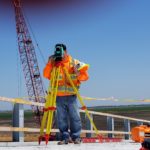UK housebuilders and property developers were put to the test in 2020, with all affected in some way, regardless of size or success.
Whilst the overall effect of the COVID-19 pandemic on the sector has been negative, there have been a few silver linings, from a renewed focus on sustainability to the rumblings of a digital revolution.
So, looking towards 2021, we ask a few of those at the frontline of the industry to share their hopes, fears, thoughts and predictions for the year ahead.
Maintaining Standards
“Changes to Part F of Building Standards are going to have a significant impact on the way buildings are designed, as well as the components specified for them. While we often think of air quality in terms of controlled systems and mechanical engineering, the design of a building’s structure can also promote better airflow to promote passive ventilation. As we look towards our net-zero 2050 targets, we can see adoption of this low impact approach increase, moving away from carbon intensive HVAC systems.
“Primarily, we will start to see structures specifically planned to harness and exploit the natural elements to promote airflow. This can be achieved in a number of ways, from specifying facades which capture a prevailing wind to creating high-ceiled, open plan interiors and creating architectural features throughout to direct airflow. One thing’s for certain, the days of cramped, confined rooms in commercial offices, full of stagnant, recycled air are set to become a thing of the past!” – Rachel Davis, Director, Perega
Plastic Perceptions
“I predict that sustainability will rise back to the top of the agenda in 2021. Recently we’ve seen a worrying amount of virgin plastic flood back into the market and indications are, as the fossil fuel industry looks to mitigate the impact of electric vehicles and green energy, production is on the increase. This urgently needs to be halted and reversed.”
“Housebuilding has a poor legacy when it comes to dealing with waste plastic and more effort/investment needs to be made into reusing and repurposing this material. Landfill’s no longer an option and, where we can, we need to find low-impact, practical solutions for what we can recycle.
“We’ll see more sustainable systems, fixtures, fittings and components which make use of recyclable plastic and its many advantageous properties coming online. However, it all starts with the specifier. They must step up in earnest and make a better business case for green construction, so far we’ve had a lot of talk, now we need action, especially if we have any hope of meeting our 2050 net-zero targets.” – Charlie Ayers, Managing Director, SureCav
Get Yourself Connected
“COVID-19 has sparked a digital revolution in the housebuilding industry and we’re now seeing emerging, and existing, technology more readily embraced where once it was met with less enthusiasm. I expect we’ll see more advanced, fully-integrated site management software launching to offer a fully collaborative construction journey in real time.
“Equally, improved broadband and wireless will deliver better connectivity, making sites more efficient and easier to operate through faster data sharing, fewer outages and lower lag times.” – PJ Farr, Managing Director, UK Connect
The Great Outdoors
“The back garden will become an extension of the living room. Not only will we see homeowners and landlords undertake renovation work to ‘evergreen’ these outdoor spaces, we’ll also see architects and developers give more careful consideration on how to enhance these areas. This will add value for the resident and allow the vendor to upsell on new features such as smart tech, outdoor heating systems and quality furniture, packaged up as part of the sale or rental package.”
“Landscaped communal areas will no doubt be reappraised in both new builds and existing properties. Coronavirus will prompt layout changes to limit close proximity and, no doubt, instigate a rise in more comfortably furnished, sheltered and sustainably heated areas where small groups can gather outdoors in a low-risk setting. Further lockdowns next year might also encourage the specification and installation of lower maintenance features, including hardy plants which do not require regular feeding and high-resistance, resin-based surfaces for walkways.” – Matthew Fagg, Brand Manager, Barlow Tyrie
‘Transformation’, ‘Evolution’, ‘Technology’ and ‘Green’ seem to be the buzzwords for 2021.
No doubt a push for further digital adoption will continue to gather momentum as we make our way through a decade which has commenced in such a disruptive way.
What’s become clear is, nationwide, housebuilders and developers now have a once in a generation opportunity to address past challenges, helping to deliver a better built environment for all.

